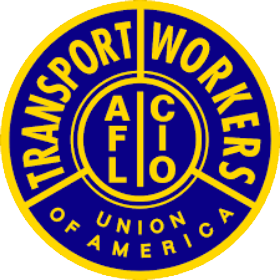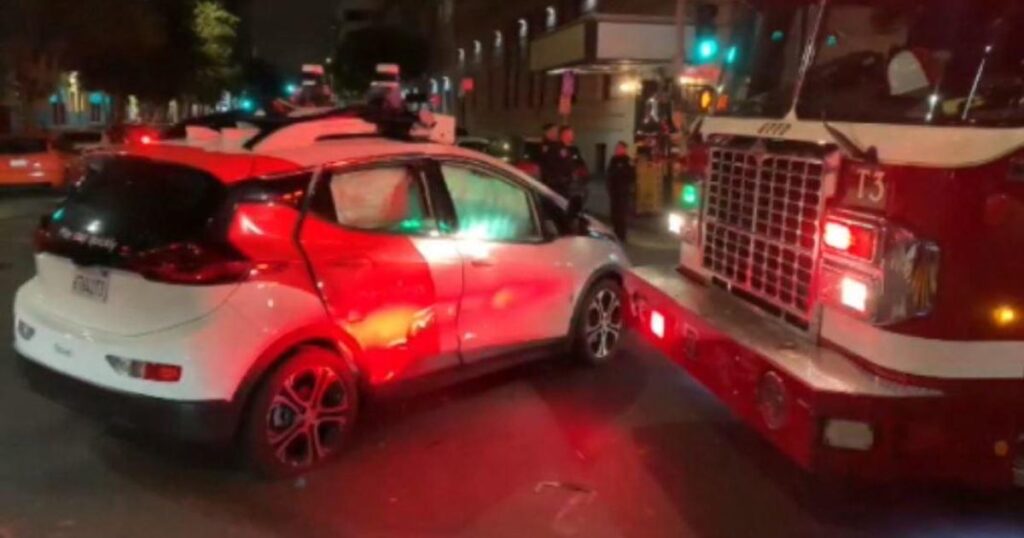This is the monthly edition of the Transport Workers Union’s Transportation Technology Newsletter. We aim to inform and educate our members, the labor movement, the public and policymakers about developments in transportation technology – and what the TWU is doing to ensure that new technology doesn’t undermine safety or harm the livelihoods of hard-working blue-collar workers. For suggestions and questions, please email ewytkind@gmail.com or adaugherty@twu.org.
ITEM OF THE MONTH
THE LATEST PUBLIC AV TESTING GROUND? NYC: It is indisputable that autonomous vehicles (AVs) such as robotaxis are failing and exposing people to severe safety risks despite lofty promises by their developers. Yet the facts are not stopping cities – from San Francisco to New York – from unleashing these zombie cars, designed to eliminate human operators, on our streets, writes Curtis Tate, TWU Administrative Vice President, in the New York Daily News.
Robotaxis and other automated vehicles have disrupted fire and police first responders, caused traffic jams, driven into flood water, and even dragged a pedestrian 20 feet after being hit by another vehicle. Now several agencies of the federal government are investigating a major robotaxi maker, Cruise.
As Tate writes, cities should take note that this technology has no place in our public transportation systems.
“Technology can be a tool to help bus operators avoid accidents, but it can never adequately replace them. They assist the elderly and wheelchair-users. They spot lost children wandering the streets alone, call first-responders about crimes in progress, assist women going into labor, help disoriented elderly passengers, and more. A bus with an empty driver’s seat can’t do any of that.”
WHAT ELSE IS COOKING
CALIFORNIA MOVING: A TWU-backed bill in California that would provide local governments with the ability to limit how autonomous vehicles operate in their city or town streets passed two California Senate Committees in recent weeks. SB 915 passed the Local Government and Transportation Committees this month and now heads to the Appropriations Committee for consideration.
Current law gives the California Department of Motor Vehicles and California Public Utilities Commission the power to green light AV use – power that enables AVs to drive around the streets of San Francisco and Los Angeles over the objections of local elected officials. This bill would allow local governments to impose constraints on how many autonomous vehicles can be deployed and where they can operate within cities and counties across California.
KENTUCKY STOPPED: Kentucky Gov. Andy Beshear recently vetoed a bill that would allow driverless cars on Kentucky roads, arguing that the measure “does not fully address questions about the safety and security” of driverless vehicles. Beshear stood with unions to block the bill for a second consecutive year but Kentucky Republicans are also divided over the measure.
The bill garnered less support this year than in 2023, passing the Senate 20-18 with 11 of 31 GOP representatives joining with Democrats to vote against it. The narrow majority means Beshear’s veto is likely to stand.
NOT JUST TESLA: The National Transportation Safety Board said a Ford Mustang Mach-E was using Ford’s “BlueCruise” feature when it struck a stationary vehicle on an interstate highway in San Antonio, Reuters reports. The NTSB and National Highway Traffic Safety Administration are investigating the crash.
JUST TRUST ME, BRO: Despite Tesla’s inability to safely deploy its lower tech “Autopilot” feature, now Elon Musk’s company wants regulators to trust that its driverless robotaxis can safely traverse American roads. Tesla is already mired in controversy over several serious crashes – including a tragic death – involving the Autopilot feature in its cars that regularly misfires and has drawn heavy criticism from federal transportation safety authorities.
“The last thing American road and public transportation users need is a fleet of Tesla robotaxis brought to us by the same company that is facing heavy federal scrutiny including an ongoing investigation of the company’s highly criticized deployment of automated driving features,” said Curtis Tate, administrative vice president for the Transport Workers Union of America. “Passengers deserve to know that automated driving technology is safe and closely regulated by government authorities before it’s permitted on our roads.”
AUTONOMOUS RAIL CAR INSPECTIONS IN NY: New York MTA is running a federal grant-funded test of automated railcar inspections on its Metro-North Railroad whose management is pursuing a scorched earth bargaining strategy to attack the livelihoods of its blue-collar commuter rail workers represented by TWU.
This experiment is one of several in the rail industry to deploy artificial intelligence for the inspection of rolling stock on freight and passenger railroads. TWU is keeping a close eye on these experiments to ensure they are designed to provide additional information and data for skilled TWU railcar inspectors and not replace them with unproven technology.
“Knowing what we know about the bosses at Metro-North, it wouldn’t surprise us at all if they were delusional enough to believe AI-enabled railcar inspections can replace the expert workers without jeopardizing the safety of passengers and the public,” said TWU International President John Samuelsen.
WHAT WE’RE READING
“Flying cars are coming! Here’s how they could change the way you travel.” USA Today.
“Uber Eats now uses Waymo’s self-driving cars to offer driverless deliveries.” NBC Bay Area.
“Robotaxi regulators say Tesla hasn’t contacted them about plans teased by Elon Musk.” NBC News.

